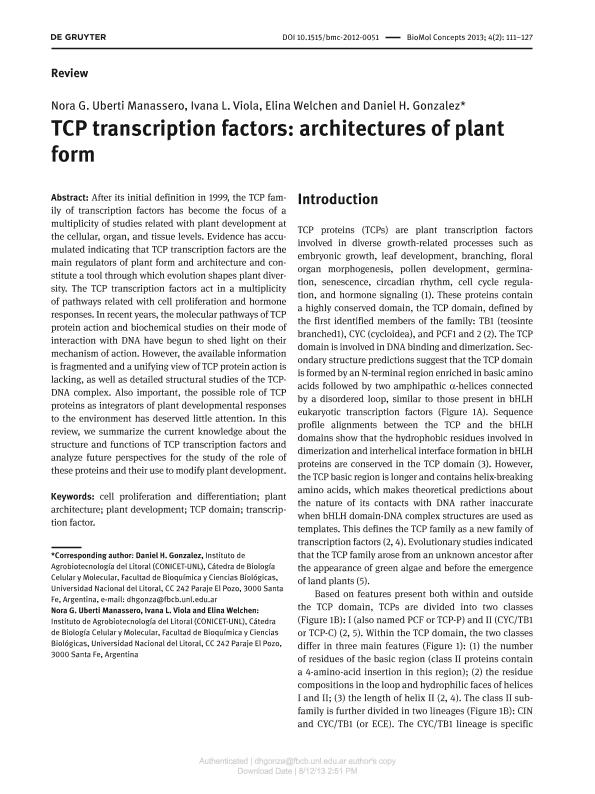Artículo
TCP transcription factors: architectures of plant form
Fecha de publicación:
04/2013
Editorial:
De Gruyter
Revista:
Biomolecular Concepts
ISSN:
1868-503X
Idioma:
Inglés
Tipo de recurso:
Artículo publicado
Clasificación temática:
Resumen
After its initial definition in 1999, the TCP family of transcription factors has become the focus of a multiplicity of studies related with plant development at the cellular, organ, and tissue levels. Evidence has accumulated indicating that TCP transcription factors are the main regulators of plant form and architecture and constitute a tool through which evolution shapes plant diversity. The TCP transcription factors act in a multiplicity of pathways related with cell proliferation and hormone responses. In recent years, the molecular pathways of TCP protein action and biochemical studies on their mode of interaction with DNA have begun to shed light on their mechanism of action. However, the available information is fragmented and a unifying view of TCP protein action is lacking, as well as detailed structural studies of the TCPDNA complex. Also important, the possible role of TCP proteins as integrators of plant developmental responses to the environment has deserved little attention. In this review, we summarize the current knowledge about the structure and functions of TCP transcription factors and analyze future perspectives for the study of the role of these proteins and their use to modify plant development.
Archivos asociados
Licencia
Identificadores
Colecciones
Articulos(IAL)
Articulos de INSTITUTO DE AGROBIOTECNOLOGIA DEL LITORAL
Articulos de INSTITUTO DE AGROBIOTECNOLOGIA DEL LITORAL
Citación
Uberti Manassero, Nora Graciela; Viola, Ivana Lorena; Welchen, Elina; Gonzalez, Daniel Hector; TCP transcription factors: architectures of plant form; De Gruyter; Biomolecular Concepts; 4; 2; 4-2013; 111-127
Compartir
Altmétricas




